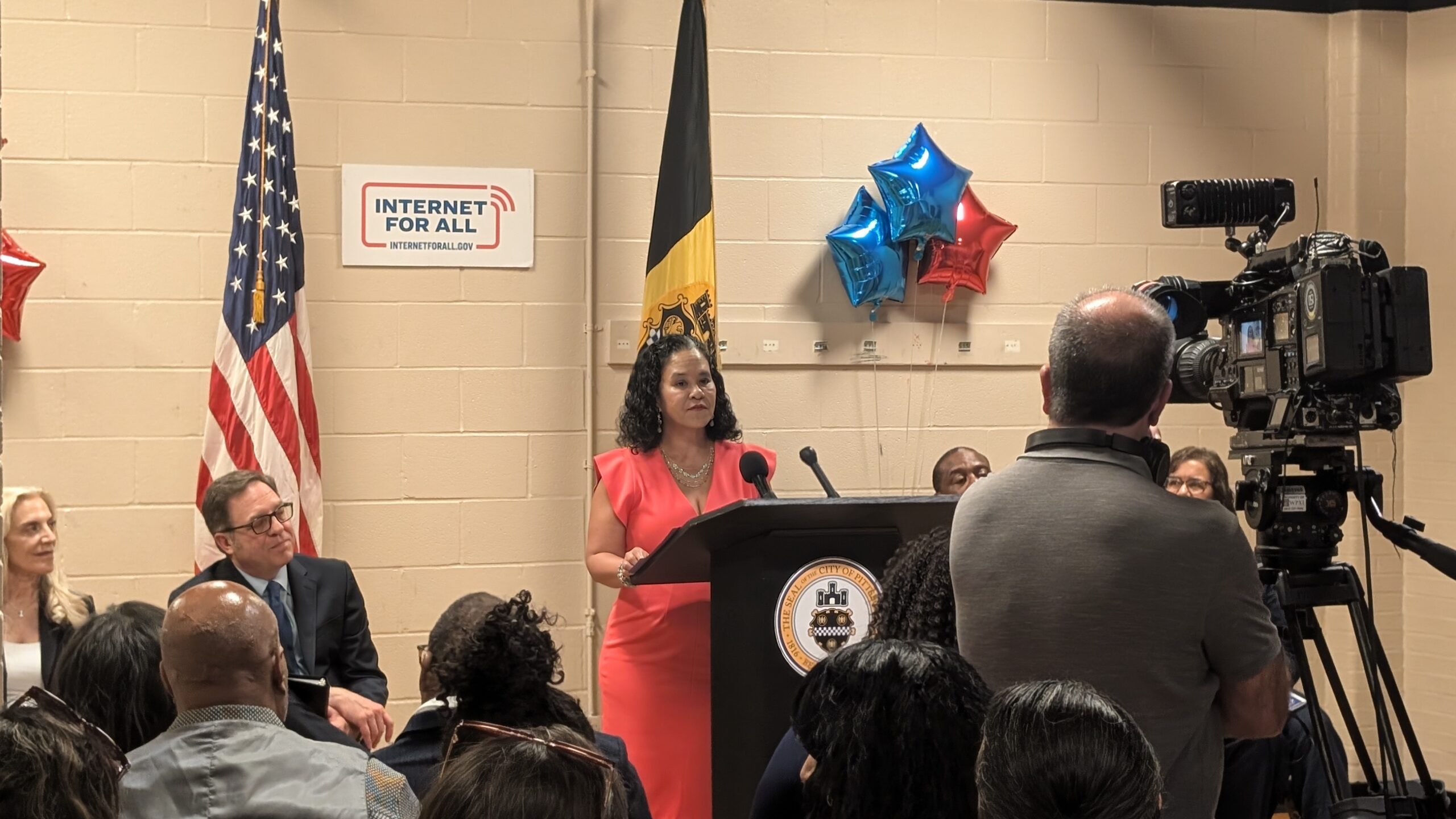I had the privilege to attend the press conference announcing the launch of the National Telecommunications and Administration’s Digital Equity competitive grant program yesterday. The program (part of the Bipartisan Infrastructure Act) provides just shy of a billion dollars for improving access to broadband – including bandwidth, devices, and digital skills training. (You may have heard these as the “three-legged stool” of digital equity.) This presents a huge opportunity to address digital divide needs for many, including those in rural areas/broadband deserts, seniors, veterans, and many others.
To say this is an enormous opportunity for libraries and other community-focused institutions is an understatement. You know how collaboration often needs just one more thing to fully swing into action? This program can provide that one thing – and likely a few more.
It’s important to remember that this program is designed to catalyze a wider spread of partnerships across the country. According to the recently-published PLA Public Library Technology Survey, only around one-fifth (19.5%) of public libraries are involved in a digital equity partnership at the local, state, or regional level. If there are no obvious answers as to where you can get involved, the Digital Equity Act funding can provide the runway for you to really think big about what a coalition might look like. This is your chance to think about creating an ecosystem of solutions, rather than a single venue for addressing access gaps.
The full notice of funding opportunity (NOFO) is located at the NTIA website.
Here are a few tips to get started:
- Do your research.
There is a growing set of emerging practices for developing a digital equity coalition. ALA has created a clearinghouse for many of these resources, which includes guidelines from NTIA and the National Digital Inclusion Alliance.
It also may be useful to look at your state’s Digital Equity plan. A previous round of federal funding was designed to help each state (and many US territories) develop a long-range vision of digital equity needs and priorities for action. You can find a link to these on the NTIA website.
As you read through these, make sure you understand what priorities have been outlined – both through your partners and the grant proposal, and how your organization might play a useful role in helping them move forward. - Build your coalition.
Addressing digital equity requires more capacity than any one organization can provide. This is why it’s fundamentally important for proposals to include a variety of stakeholders with complimentary skills. Talk with your partners and discuss ways in which you might be able to support another. Look to your statewide or regional digital inclusion team for referrals or support. And think about how you might include members of the populations you hope to serve in the design process. - Define your niche(s).
Collaboration isn’t about getting everyone to work in lockstep. Instead, it’s a chance to orchestrate collective actions to ensure the greatest impact. This is an opportunity to have in-depth conversations with your partners about what each stakeholder is willing to bring to the table.
Think about the following questions:
Where do the strengths and weakness reside with each group? Are there practical requirements (such as a SAM.gov account) for which one partner might need to take responsibility? Where might one group play more of a leadership role, and others might provide support? Where are the places where stakeholders need to get out of one another’s way?
These are all things you might want to consider as you start to develop a funding proposal. Above all else, this is a chance to get creative – while the program has some very specific constraints, there is plenty of room for innovation within the digital equity framework.
The application window is open now through September 23rd, and NTIA is hosting a webinar this afternoon at 2PM Eastern time.
Don’t hesitate to reach out if I can help you think through a project.
Many thanks to Larra Clark for editorial and fact-checking assistance.

Comments are closed